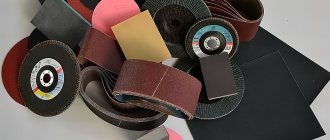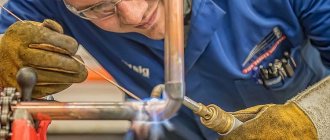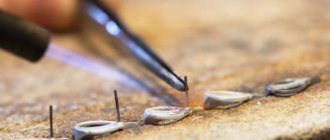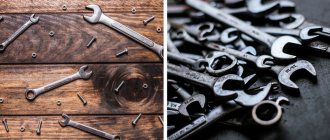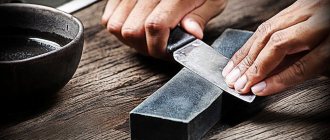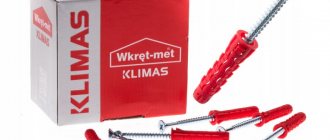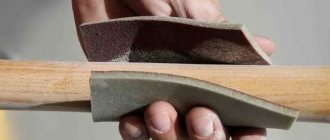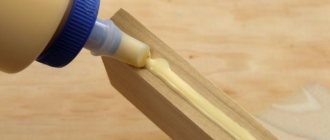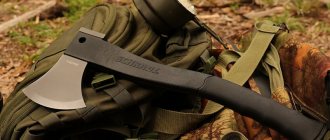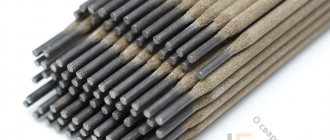This abrasive is better known in everyday life as sandpaper. Everyone knows that sandpaper can be used for surface treatment of various materials - from plastics and wood to metals. But to the question, what are the specifics of the application depending on the marking of the sandpaper, not many will be able to answer correctly.
Those who want to become more familiar with the technical specifications for sandpaper have certain difficulties in finding the appropriate standard. There are several GOSTs - No. 6456 from 1982 (for paper sandpaper), No. 5009, dated the same year (for paper and fabric-based sandpaper) and No. 52381 from 2005 (concerns the grain size of products). There are often references to another Soviet standard - No. 3647 of 1980.
How to figure it out?
- Russian GOST (the letter P is present in the marking of sandpaper) fully complies with foreign standards, which are prescribed in the ISO 6344 standard (generally accepted).
- Some manufacturers from neighboring countries are guided by GOST from the times of the USSR - in the marking of the letter N or M (for skins with small grains).
- Some countries have their own standards, and sandpaper has its own markings. As an example - Japan, USA, Canada, China.
Further, in order not to repeat myself, the author will indicate the markings of the paper, depending on its purpose, in both Russian and Soviet (in brackets) symbols. There are no big differences in determining the “grain” of the skin, and, accordingly, the specifics of its use, and a more detailed examination of all the features of the product varieties is of interest only to a specialized specialist. In terms of domestic use, they do not play any role.
Abrasive material
I wasn’t too lazy to photograph the underside of the skin that the birdhouse was processing .
Resin bonded line - abrasive material, grinding material (according to the English - Russian dictionary of mechanical engineering and production automation)
If you look at the back of your sandpaper, you will most likely see a similar simple inscription aluminum oxide , which means aluminum oxide ( in common parlance, electrocorundum ). A possible option is silicon carbide or ceramic abrasive.
The first is a brittle material and is used for processing wood, alloy steel, and cast iron.
The second ( silicon carbide ) has high hardness and is designed to work with glass, plastic, and metal.
As a rule, this knowledge is enough for the general consumer to do housework, but for the sake of general development we suggest covering the topic more broadly:
Areas of application of abrasives according to the type of abrasive material
Normal electrocorundum (93-96% Al2O3 - for example 16A) such abrasives are intended for malleable cast iron, hardened and non-hardened steels, and wood.
White electrocorundum (Al2O3 no more than 99% - for example 25A) - for processing heat-resistant and alloy steels.
Silicon carbide (for example 64C) – finishing processing of metal, cast iron, bronze, aluminum, plastic, marble, granite, glass, wood.
Flint (for example 81K) - for processing wood, plywood, leather.
Glass (for example 71C) - for processing wood, plywood, felt, felt.
Garnet – for processing hard hardwood (oak, beech, etc.).
Elbor – for polishing precision surfaces and hard-to-machine steel parts.
Diamond – for polishing and fine honing of precision parts made of carbide and cast iron.
Type of sandpaper base
paper-based sandpaper
This sandpaper has a fairly low wear resistance coefficient. Along with a low safety margin, paper-based emery, as a rule, does not have water-resistant properties.
P1 , P2 , PZ . before PI - non-water-resistant paper.
This greatly narrows the scope of application, but also reduces the market value.
cloth sandpaper
Today, the most common base fabrics are cotton and polyester. Fabric-based abrasives most often have water-resistant properties due to a special resin-based impregnation.
L1 , L2 and M - moisture-resistant paper.
Such sandpapers have a higher safety margin compared to paper ones.
The manufacturer may indicate 1 or 2 .
1 – the sandpaper is intended for materials of low hardness (putty, primer, paint, enamel, soft wood, plastic)
2 – for hard metal alloys.
There is also sandpaper with a mixed base (fabric + paper) or other materials (for example, fiber-based discs are widespread).
Type of abrasive application
Sandpaper with a semi-open or open abrasive layer
The base is half closed. The gaps between the particles cover 40 to 60% of the base area. This abrasive is used for processing soft and friable materials.
No lumps are formed during operation, which prevents clogging of empty spaces with waste.
2. sandpaper with a closed or continuous abrasive layer
It is characterized by complete coverage of the base with abrasive material and is designed for use on hard surfaces.
Sandpaper markings and scope of application
Coarse sandpaper
- Р22 – 36 (Н50 – 80) – for primary (preliminary) processing of parts. For example, removing a layer of rust, descaling, and the like. Therefore, the purpose is preparation for further work with the material.
- P40 – 60 (H25 – 40). Sandpaper with similar markings is used for rough surface treatment - cleaning, leveling, removing contamination in certain areas, and so on.
- P80 – 120 (H10 – 20). Purpose: precision processing. It is more often called pre-grinding. In some cases, this is enough to apply any coating or paste the surface.
- P150 – 180 (H6 – 8). This sandpaper is used for final leveling (grinding) when extreme precision is not required.
Fine-grained sandpaper
- P240 – 280 (M63, H5) – metals and hard wood.
- P1000 (H1, M20) – plastics, ceramics, soft metals.
Polishing
- P400 – 600 (H2 – 3, M28 – 40). The main purpose is to prepare the surface for applying varnishes or paints.
- P1200 – 2500 (M5 – 14, H0 – 00 – 01). This type of sandpaper is called “velvet”. Designed for the most delicate operations, when it is necessary to “finish” a part after all previous treatments.
As already noted, the skin has a different base. What is the difference?
Full explanation of sandpaper markings
So, we already understand something and can try to read what the manufacturer had in mind.
For example, this marking ( old GOST )
Example: 2 830×50 S2G 24A 40-NMA GOST 5009-82 .
Abrasive for processing hard metal alloys ( 2 ), in a roll ( 830 mm by 50 m ) on a fabric basis - twill ( S2G ), from electrocorundum ( 24A ), with a grain size of 40 microns ( 40-N ), on hide glue ( M ).
Explanation
Type of binder: M —hide glue; C - synthetic resin; K - combined ligament.
In the old GOST, the sixth letter indicated the class of the abrasive - the number of defects. And no more than 0.5% ; B - no more than 2% ; B - no more than 3% .
Therefore, the number of defects ( A ) on the working surface of our example is no more than 0.5% .
or (new European standard using German VSM sandpaper as an example)
Electrocorundum abrasive ( K ) on a fabric ( K ) and hard ( X ) basis with a grain size of P150 (75-106 microns).
It often happens that a seemingly insignificant thing turns out to be truly irreplaceable, and its scope of application is quite wide. Sandpaper is just one of these necessary things. It is also called sandpaper or sandpaper. It is the most popular abrasive, for which there is no alternative today. Every furniture maker, mechanic, sculptor, as well as car painter and any good owner needs it.
[SIA1200] 1200 grit sandpaper, 2 sheets
About us We promise that:
- Having more than 15 years of experience, we offer only the best products on the market, eliminating obvious failed products;
- We deliver goods to our customers all over the world accurately and quickly.
Customer Service Rules
We are happy to answer any relevant questions that you have or may have. Please contact us and we will do our best to respond to you as soon as possible. Our field of activity: prefabricated wooden models of sailing ships and other ships, models for assembling steam locomotives, trams and carriages, 3D models made of metal, prefabricated mechanical watches made of wood, construction models of buildings, castles and churches made of wood, metal and ceramics, hand and power tools for modeling, consumables (blades, nozzles, sanding accessories), glues, varnishes, oils, wood stains. Sheet metal and plastic, tubes, metal and plastic profiles for independent modeling and making mock-ups, books and magazines on woodworking and sailing, ship drawings. Thousands of elements for independent construction of models, hundreds of types and standard sizes of slats, sheets and dies of valuable wood species.
- Worldwide delivery. (except some countries);
- Fast processing of received orders;
- The photographs presented on our website were taken by us or provided by the manufacturers. But in some cases, the manufacturer may change the packaging of the product. In this case, the photographs presented will be for reference only;
- Delivery times provided are provided by carriers and do not include weekends or holidays. At peak times (before the New Year), delivery times may be increased.
- If you have not received your paid order within 30 days (60 days for international orders) from dispatch, please contact us. We will track the order and contact you as soon as possible. Our goal is customer satisfaction!
Our advantages
- All goods are in our warehouse in adequate quantities;
- We have the most experience in the country in the field of wooden sailboat models and therefore can always objectively assess your capabilities and advise what to choose to suit your needs;
- We offer you various delivery methods: courier, regular and EMS mail, SDEK, Boxberry and Business Lines. These carriers can completely cover your needs in terms of delivery time, cost and geography.
We firmly believe that we will become your best partner!
Definition of grain size and its types
Grit is the ratio of the amount of abrasive material applied to a square surface of the base. This is the main indicator of the use of sandpaper. The more abrasive is placed per unit area, the smaller the grain size. And the less abrasive, the larger the crystal.
According to the grain size, sandpaper is divided into three categories:
- Coarse-grained . It is used during the initial processing of the material and cleaning it from paint and varnish. This skin has coarse and large grains. Often, coarse-grained emery is used when it is not necessary to smooth the surface, but to clean off the top layer. Sandpaper leaves deep scratches on the surface, therefore, subsequent treatment with less grainy sandpaper is required. Coarse sandpaper has numbers from 12 to 80.
- Medium grain is used for intermediate processing. It cleans and levels the surface. The material becomes smoother and more even. This type of sandpaper leaves less deep scratches than coarse-grained sandpaper. Numbers from 80 to 160.
- Fine-grained . Often this sandpaper is used at the last stage of processing to sand the surface before painting. Zero-grain emery also belongs to fine-grained sandpaper. Numbers from 160 to 4000.
Sandpaper is also classified according to the substances that make up the abrasive. Among them:
- Silicon carbide is a fairly durable abrasive. Such skins are in demand when processing products made of fiberglass, metal and plastic.
- Alumina. The material is not cheap, but the service life justifies the cost. The fragile crystals break during grinding. In their place, smaller but no less sharp particles are formed.
- Garnet is a natural abrasive. Used when sanding wood. Due to the softness of the paper, the fibers are well sealed, therefore, the paint layer on the product will lie evenly.
- The most expensive is considered to be diamond sandpaper, which is practically not subject to wear. Used in industry.
- Ceramics are required at the stage of shaping and leveling the wood. It is distinguished by increased hardness. Used in coarse types of sandpaper.
Fabric sandpaper
Pros:
- Tensile strength combined with some elasticity. The main purpose of this product is to process parts mechanically, for example using a grinding machine.
- Minimal moisture absorption.
Minus:
- The price is higher than paper counterparts.
All types of sandpaper differ in the density of grain filling. This feature also determines the main purpose of the skin.
- Solid backfill – for working with hard samples (metals, dense wood, ebonite, etc.).
- Open (half-open) – for stripping and grinding relatively soft materials with a porous structure. It is also used when treating surfaces on which putty and paint were previously applied, as well as coniferous wood, plastics and in a number of other cases.
If it is necessary to finish grinding a part (bringing it to a marketable state), instead of fine-grained sandpaper, it is advisable to use regular, coarse sandpaper. As an option, wrapping. The effect is the same.
Particular care must be taken when stripping copper contact groups. For example, lamellas of electric motor commutators. In this case, only “glass” skin is used. All other types of sandpaper increase the wear of carbon brushes, as they leave tiny abrasive fractions (dust) on the surface of the copper.
Additional information about the product, including its purpose, can be found on the reverse side of the sample. The letters used are very different, but the most common ones should be indicated.
- M, L1 (or 2) – moisture-resistant sandpaper.
- 1 – for porous (soft) materials.
- 2 – for grinding parts made of hard alloys, metals or dense wood.
- P – only for dry surfaces (increased moisture absorption).
- L – sheet sandpaper. Rolled skins have no designation.
When choosing sandpaper based on markings, you need to take into account local specifics - the material of the part, the degree of its contamination (rusting), humidity, whether there was pre-treatment (for example, paint) and a number of other nuances. Only in this case can a rational purchase be made.
Sandpaper markings
The marking indicates the exact characteristics of the sandpaper (type of abrasive and type of grit). All data is indicated on the reverse side of the sheet. The classification of domestic GOST 3647−80 is outdated. Today, marking is carried out in accordance with the international standard ISO 6344. It is important that the values of international standards overlap with GOST data.
The area of application depends on the grain size. The table contains designations according to GOST USSR and international ISO standards, as well as areas of use of specific abrasives.
Coarse sandpaper markings
| Sanding paper GOST 3647–80 | Sanding paper ISO 6344 | Scope of use |
| 63-N, 50-N, 80-N | P36, P22, P24 | Rough rough work |
| 25-N, 32-N, 40-N | P40, P60, P46 | Rough grinding |
| 10-N, 16-N, 20-N, 12-N | P80 - P120 | Initial cleanup |
| 6-H, 8-H | P150, P180 | Final sanding |
Fine-grit sandpaper markings
| GOST 3647–80 | ISO 6344 | Application |
| M63, 5-N | P280, P240 | Sanding hardwood |
| 3-N, M28, M40, 2-N | P400, P600 | Polishing the surface before painting |
| 1-N, M20 | Р1000 | Processing of ceramics, metal, plastic |
| M14, N-0, M5, N-00, M7, N-01, M10 | Р1200, Р1500 and more | Final polishing |
Explanation of the letters in the marking designation on the reverse side of the material:
- The letter "P" stands for grit.
- Sheet paper is marked with the letter “L”. They don’t indicate roll in any way.
- “H” is the crystal size in tens of microns.
- The letters “L1”, “L2”, “M” indicate moisture resistance.
- “P” - for dry work, without contact with moisture.
- The number “1” is for grinding soft materials.
- “2” is for metal.
Tools
0 votes
+
Vote for!
—
Vote against!
It often happens that a small and seemingly insignificant thing turns out to be truly irreplaceable, and it is easier to name those areas where its use is not required than to list the opposite. Sandpaper falls into the category of such necessary things, and in this article we’ll talk about it in more detail.
Sandpaper markings
Sandpaper is a type of sanding material in which an abrasive substance in the form of “grain” or powder is applied to the base. Actually, this structure of the abrasive is the main characteristic of the product. The grain size allows for the appropriate types of work. The markings will help you learn more about this.
Sandpaper photo
- The full range of notations will be of interest exclusively to a specialist in a narrow field. The table below shows only the indicators necessary for the practical use of the material by the common man. All data is indicated according to Russian GOST, which is also correlated with FEPA and ISO 6344 standards used abroad.
- So, marking allows you to determine for what types of activities paper with different “grains”, designated by the letter “P,” is used. Indicators are measured in numbers. The smallest abrasive size corresponds to the number with the highest value. Often in the former republics of the USSR there is a designation with the letter “N” (the size is indicated in tens of microns) or the letter “M” (the size of the “grain” is calculated in microns). Such “understudies” are indicated in the “Notes” column.
| Marking | Application area | Notes |
| P22; P24; P36 | For very rough rough work | 80-N; 63-N; 50-N |
| P40; P46, P60 | For rough sanding | 40-N; 32-N; 25-N |
| P80 – P120 | Primary cleaning | 20-N; 16-N; 12-N;10,-N |
| P150; P180 | For final sanding | 6-H; 8-N |
- For fine sandpaper, the classification is as follows:
| Marking | Application area | Notes |
| P280; P240 | For sanding hard wood | M63; 5-H |
| P600; P400 | Polishing surfaces before painting | M40; M28; 2-H; 3-H |
| Р1000 | Processing of plastic, ceramics, metal | M20; 1-H |
| P1200; Р1500 | Final polishing | M5; M7; M10; M14; N-01; N-00; N-0 |
The reverse side of the material contains other useful information.
Skin base
- Paper. It is the fastest wearing option, but can withstand quite a lot of loads; all fine-grained skins are made on this basis. In addition, this is also the cheapest option.
- Fabric-based sandpaper is more wear-resistant than the previous sample described; sometimes it is impregnated with special water-repellent compounds. This option is more elastic.
- Combined . It combines the advantages of the previously described basics, which is why its price is higher. It is intended for work where great effort is required and maximum mechanical impact is achieved. That is, this is the basis for coarse sandpaper.
- Velcro sandpaper. Available for surface grinders, the design of which provides for fastening the abrasive with Velcro. The main advantage is that there is no need to cut it manually into the required sizes. Glue or artificial resin acts as a sticky binder.
Type of abrasive
- Garnet is a naturally occurring abrasive that works well for sanding wood. The paper with it is comparatively soft, so it “seals” the wood structure well, allowing the paint to be evenly distributed over the surface.
- Silicon carbide is a very durable material. Skins with this type of abrasive are indispensable when processing metals, painted parts, plastics, and fiberglass products.
- Ceramic abrasive will be required at the stage of wood formation and leveling. That is, it is used in coarse types of sandpaper, and is more often found in the form of sanding belts. It has high hardness.
- Aluminum oxide is characterized by fragility, which “plays into its favor” in that during the processing of surfaces with it, the abrasive “breaks” from heat and applied effort, forming new sharpened edges that continue to work. That is why the service life of such skin can be impressive. It is used more often in woodworking industries.
Tip: sheet sandpaper marked with the index “L1” is suitable for sanding products made of soft materials. The letter “L” and number 2 indicate the possibility of use on metals. They, like the marking with the letter “M”, will tell the consumer about the moisture-resistant impregnation of the skin. “P” on the contrary will warn about fear of dampness. “Representatives” of the waterproof type are designed for wet grinding, which gives a smoother surface and the absence of dust when performing work.
Types of sandpaper
Sandpaper can be divided into categories depending on several factors:
- sandpaper size (grit);
- application area;
- release form
Some of them were partially mentioned above, but to complete the picture, there is a need to identify them separately and supplement the existing information.
Sandpaper numbers (grit) are a specific indicator characterizing the number of abrasive particles per square inch. In accordance with this, the skin is usually divided into:
- coarse-grained for cleaning surfaces from old coatings (varnish, paint) and initial processing. The abrasive in it is coarse and of a large fraction, together with the removal of the top layer, it leaves grooves and scratches on the material, therefore, further processing will be required. Thus, the coarsest-grained sandpaper is most often used when there is a need not to smooth, but rather to grind off the top layer (for example, on wood to give the desired shape to the workpiece). Numbers 12-80;
- medium-grained is required at intermediate stages of grinding and is suitable just for leveling the surfaces of their cleaning, and so on, so that the multi-layer processing is smooth and of high quality. It, of course, smoothes and levels the surface, but still leaves behind traces, although not as obvious as specimens with large grains. Numbers 80-160;
- fine-grained removes defects from previous polishing, making the surface ready for final processing (for example, applying paint). This also includes zero grade sandpaper. Numbers 160-4000.
To summarize, we note that the procedure for working with various materials is the same in all cases. They start by using sandpaper with very coarse particles. This includes wood processing, removal of old paints and varnishes, and removal of rust on metal products. Gradually, the transition is made to paper with a finer abrasive, and final polishing is performed.
Sandpaper release form
As for the release form , two main types can be noted: sheet and sandpaper in rolls. But besides them, various other configurations are also produced.
- Fiber sandpaper . It is a non-woven material made of mesh impregnated with abrasive materials, fixed to the base using special resins. It is needed for matting surfaces. The elastic base allows you to achieve the desired effect even in hard-to-reach places. In this way, an optimal basis for subsequent priming or painting is achieved.
- The abrasive mesh is a patented material for dust-free sanding. The structure of this material is a polyester mesh with fixed abrasive grain. This mesh structure ensures excellent dust removal through the entire surface of the abrasive material, which does not clog and is protected from the formation of lumps. The strength of the mesh guarantees its long service life, which results in less consumption of grinding equipment.
- Abrasive wheels . Micro-fine polishing varieties, thanks to the use of advanced technologies, make it possible to smooth out minor defects in the paintwork. They are used in conjunction with substrates that provide a tight fit to surfaces with complex contours (for example, on cars). Quick removal of small scratches significantly reduces processing time, making it more uniform and of higher quality. Cleaning specimens have a strong cutting edge and have an aggressive abrasive structure. They are designed to heat up less and not become greasy. Unlike wire brushes, they last much longer. Designed for cleaning metal surfaces.
- Abrasive paper in strips has a high cutting ability and a long service life. Can be produced with special technological holes for dust removal.
- Waterproof sandpaper is needed for initial or final wet processing of various surfaces.
- Rolled skin . Produced on different bases for a wide variety of applications and with different technical characteristics, suitable even for highly specialized work (for example, in the production or repair of shoes).
- The foam- based sandpaper is treated to prevent clogging and is not intended for wet sanding. It is used for processing primed and varnished coatings, finishing contours and edges. Suitable for both profile and flat surfaces, because the foam promotes uniform distribution of the abrasive when pressed. The same condition guarantees no slippage.
- Sandpaper for grinding machines. Available in certain sizes with an adhesive backing, making it easy to attach and quickly change.
- Abrasive sponges are needed for processing surfaces with complex textures, for shaping, and grinding edges. Well suited for hand polishing in hard-to-reach areas. They are used to prepare the surface for painting. Available in various abrasive grain sizes from ultra and super fine to medium.
- Abrasive flowers are used to eliminate small defects. The unusual shape is aimed at ensuring that there are no risks during work. Can be used on both new and repainted surfaces.
- sanding belts are threaded into machines or sanding machines.
Sanding with sandpaper
It has already been noted that the described material is required in many areas of activity:
- construction and finishing: processing putty surfaces in order to level them and get rid of small grooves from a spatula or sagging, stripping various materials (metal, wood, PVC) from old coating;
- car repair: performing various types of body work (removing traces of corrosion, treating the base before puttying and its subsequent leveling, sanding before painting, applying varnish, matting the surface before priming and other types of work);
- woodworking: sanding wood, obtaining a uniform surface, processing water-based paints and varnishes;
- painting work: treating bases before and after applying paint, smoothing out smudges;
- furniture repair and production.
Many home craftsmen find very original ways to solve certain problems. Here are some of them using skins “inappropriately”.
- Cleaning the seams between tiles . Stubborn stains in the spaces between tiles can be very difficult to remove using cleaning products. To do this, some craftsmen advise using a sheet of fine-grained sandpaper bent in half. The grout should be handled with great care, being careful not to damage the tile itself.
- Sharpening needles. This area of application will be appreciated by needlewomen. To return the needle to its former sharpness, simply pierce the sandpaper with it several times, or “wrap” the tip in sandpaper and rotate it briefly.
- Update your cutting board. Over time, wooden cutting boards become riddled with a fine network of knife grooves. This does not easily spoil the appearance of the product, but it is also very unhygienic, because such a surface is a “paradise” for bacteria and microbes. To level the base, you just need to use sandpaper.
- "Repair" of suede . Light abrasions and dirt from suede items can be removed with sandpaper. You should carefully walk it in places that require cleaning, and then “comb” it with a brush to return the pile to its place.
This is not a complete list of areas for using sandpaper, but it is impressive. The little things really add up to something bigger than what meets the eye.
Base material
The base is an equally important characteristic that indicates the purpose of the skin. Preferences depend on the purpose of use. The abrasive can be made from three types of material:
- Paper. The cheapest option, but able to withstand heavy loads. Has water-resistant properties. The bulk of fine-grained skins are produced on a paper basis.
- Textile. A more wear-resistant option compared to the previous one. For moisture resistance, they are impregnated with special resins. The fabric base gives the skin elasticity.
- Combined (two-layer) canvas made of paper and fabric. This base combines all the properties of paper and fabric. It has strength, wear resistance and elasticity. Coarse-grained emery is produced on a combined basis.
Release form
The main forms of sandpaper are sheets and rolls, but there are other configurations:
- The abrasive mesh is designed for dust-free sanding. During operation, small particles do not become clogged in the pores, but pass through the surface of the material.
- Sanding belts for threading into a lathe or sanding machine.
- Abrasive wheels are fine-grained paper, which is produced in the form of an attachment to a mechanical device. With their help, the metal surface is cleaned of old coating and rust is removed.
- Paper of various grains, which is cut to the shape and size of an attachment for an electric tool with a Velcro fastening.
- Abrasive sponges are used for manual polishing in hard-to-reach places and for grinding the edges of a product. Available in different grain sizes from superfine to medium.

